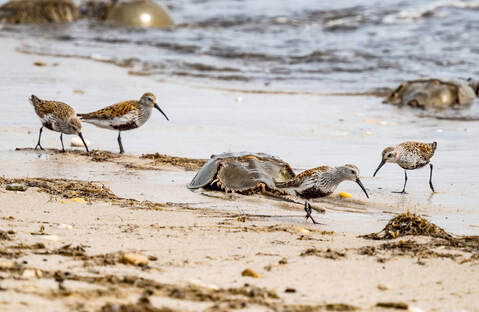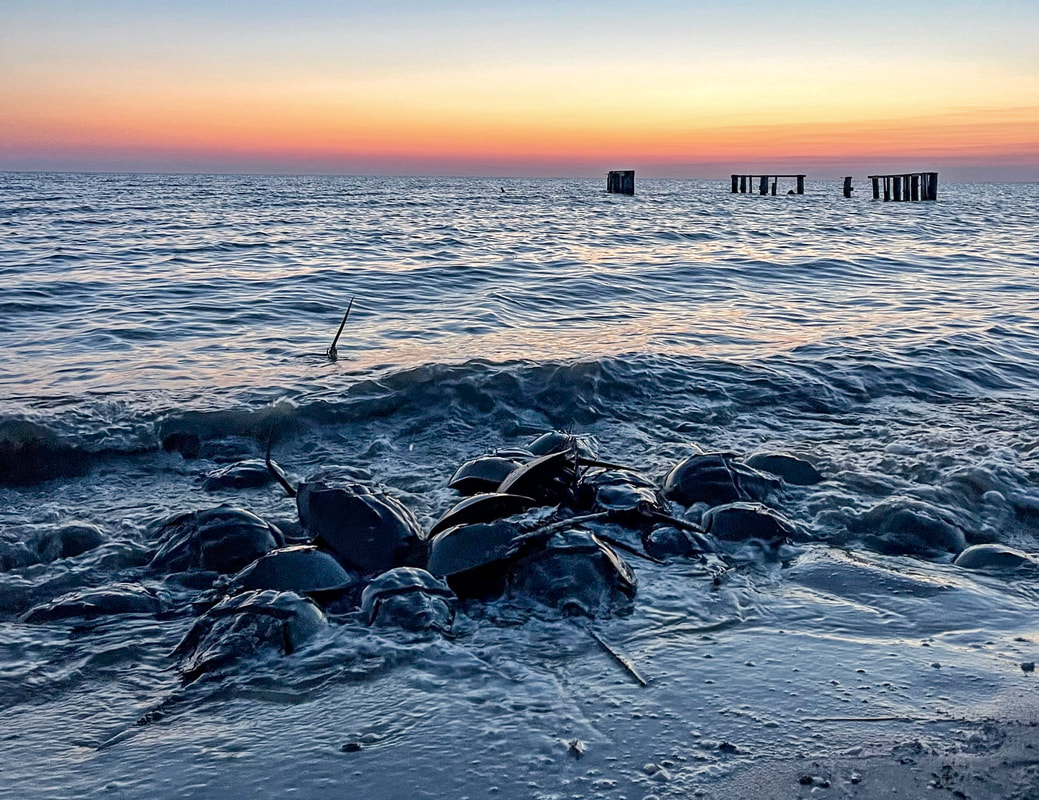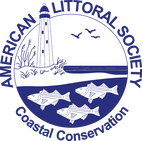|
Last year, tens of thousands spoke out against a plan to increase the harvest of horseshoe crabs in the Delaware Bay. That public concern helped convince the Atlantic States Marine Fisheries Commission (ASMFC) to keep existing limits in place. While the effort certainly warrants both praise and thanks, it only bought the crabs - and the shorebirds who depend on them - a year of continued protection. The ASMFC will revisit the harvest limit issue this coming fall and, unless things change, may approach it using the same flawed framework that led the commission to conclude the bay's female horseshoe crab populations no longer needed protection. All of which means that we may soon be asking people to again raise their voices with ours to protect both the crabs and the birds - such as the Rufa Red Knot - that rely on the crabs' eggs for survival.  The good news is that more than 34,000 people submitted comments to the ASMFC's Horseshoe Crab Management Board, most of them in opposition to a proposed change to the Adaptive Resource Management (ARM) plan that would have allowed an annual bait harvest in the Delaware Bay of 150,000 female crabs and 500,000 males. For the past decade, the ASMFC prohibited the harvest of any female crabs for bait by commercial American eel, catfish, and conch fisheries. The ASMFC is a deliberative body made up of representatives from the 15 U.S. states on the Atlantic Coast. It was formed to coordinate and manage sustainable use of fishery resources — including marine (saltwater) fish, shellfish, and anadromous fish (migratory fish that ascended rivers from the sea for spawning). The populations of female horseshoe crabs and red knots, how they are linked, and how the commission assesses the health of those populations has been at the heart of the debate. Red Knots are among the migratory shorebirds that pass through the Delaware Bay region each spring on their way to Arctic nesting grounds. Their annual stop over coincides with horseshoe crab spawning season, which brings tens of thousands of crabs onto beaches to lay eggs (one female crab can lay 100,000 pinhead sized eggs). The birds feast on the protein-rich eggs to refuel for the last leg of their journey. The math of this intertwined relationship is simple: fewer crabs mean fewer eggs; fewer eggs mean fewer birds that complete the trip; and fewer nesting birds mean their population continues to decline. Red Knots are currently listed as threatened under the Endangered Species Act. The old ARM was enacted after horseshoe crab and Red Knot populations plummeted during the 1990s. When put in place, the ASMFC indicated the harvest plan would not be changed until the Delaware Bay region hosted at least 81,900 Red Knots or 11.2 million female horseshoe crabs. In 2021, field studies indicated less than 7,000 Red Knots reached Delaware Bay beaches. While Red Knot numbers on Delaware Bay beaches nearly doubled in 2022, studies of crab egg density indicate that the bay's horseshoe crab population may be in trouble. While the ASMFC has prohibited the harvest of female crabs for bait, the commission has allowed the biomedical industry to catch an unpublished number of crabs each year to extract some of their blood, which is used to detect bacteria in medical products including vaccines. While the companies involved insist bleeding the crabs harms only a small fraction, there is mounting evidence that many die when returned to the water and others are unable to lay eggs for years. Despite those indicators, the ASMFC concluded that the current ARM used software that is “antiquated, not supported, does not run on current computer operating systems, and is limited in its capacity to incorporate uncertainty when determining optimum harvest strategies.” The new model, which was developed last year, determined that both crab and bird populations were stable or increasing, arriving at estimates that were wildly out of line with the conclusions of many other experts. However, even those inflated numbers put both populations significantly below the level the ASMFC said had to be reached before harvesting of female crabs could resume. The American Littoral Society and many other environmental organizations opposed the proposal to increase bait harvesting because even if populations were rising the proposed change might compromise the balance between horseshoe crabs and the shorebirds. “We know Red Knot numbers are so depleted that the species is listed as threatened, so we shouldn’t take risks we can avoid,” said Tim Dillingham, Executive Director of the American Littoral Society. “Using horseshoe crabs for bait could hurt not just the environment but also the economy of the entire Delaware Bay region. It’s just not worth it.” The revenue equivalent for turning horseshoe crabs into bait for eels, catfish, and conch is about $100,000 annually. In contrast, a 2006 study found that eco-tourism focused on Delaware Bay's migratory shorebirds was worth $34 million a year in New Jersey's Cape May County alone. In 2008, an effort led by the Littoral Society, working with the Audubon Society and the Delaware Riverkeeper Network, resulted in New Jersey's legislature passing a ban on taking any horseshoe crabs, with exemptions for biomedical use, including research and the development vaccines. The New Jersey moratorium remains in place, but it is the only one enacted by states bordering the bay. Environmental organizations in Delaware have launched an effort to convince the Delaware legislature to pass a crab harvest moratorium, like New Jersey's. While certainly celebrating the ASMFC's 2022 decision – and the groundswell of public support that helped drive it – the Littoral Society and partners plan to continue monitoring the situation, while also exploring other avenues to protect both the crabs and birds of the Delaware Bay area. If you’d like to learn more about horseshoe crabs and shorebirds, join the Littoral Society in the Spring for horseshoe crab tagging along the Delaware Bay and Shark River. The volunteer tagging schedule will be posted on the Littoral Society calendar of events or, for Delaware Bay tagging, at https://www.horseshoecrabtagging.org. Comments are closed.
|
Archives
July 2024
Categories
All
|


